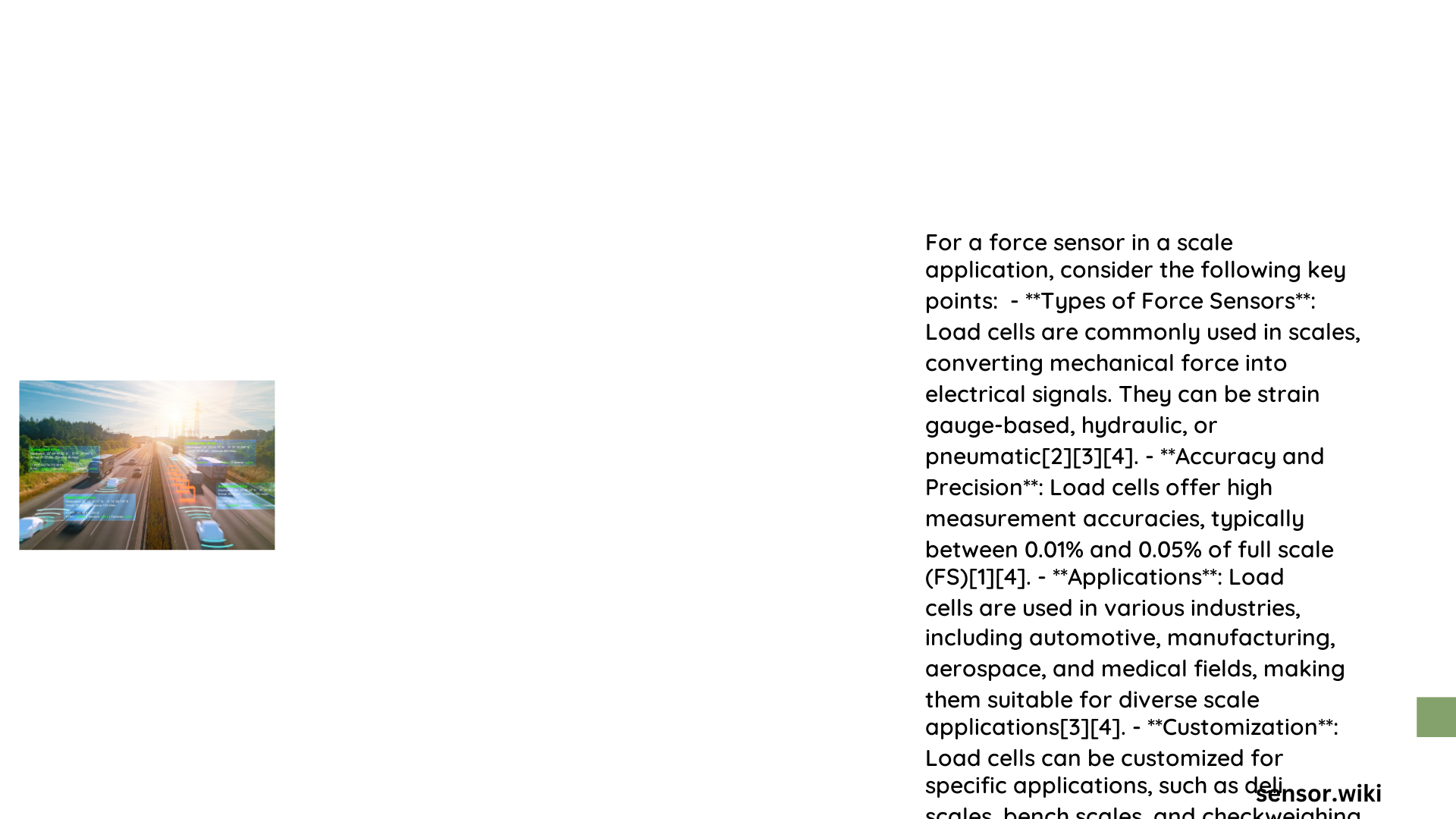Force sensors for scales represent sophisticated measurement technologies that transform mechanical force into precise electrical signals, enabling accurate weight determination across diverse industrial and commercial applications. These advanced transducers utilize sophisticated mechanisms like strain gauges and compression technologies to convert physical load into quantifiable electrical outputs, ensuring exceptional measurement reliability and consistency.
What Are Force Sensors in Scales?
Force sensors are specialized electronic components designed to measure and convert mechanical force into electrical signals with remarkable precision. In scales, these sensors play a critical role in transforming physical weight into accurate digital representations.
Key Components of Force Sensors
| Component | Function | Typical Specification |
|---|---|---|
| Strain Gauge | Measures Deformation | 2 mV/V Sensitivity |
| Load Cell | Force Conversion | ±0.15% Accuracy |
| Signal Conditioning Circuit | Signal Amplification | 0-10V Output Range |
How Do Force Sensors Operate in Scales?

Force sensors operate through several fundamental mechanisms:
- Mechanical Deformation Detection
- Strain gauges measure minute material deformations
- Converts physical compression into electrical signals
-
Provides high-precision weight measurements
-
Signal Transformation
- Electrical resistance changes proportionally to applied force
- Amplification circuits convert resistance variations
- Generates standardized output for weight calculation
What Are Different Types of Force Sensors?
Strain Gauge Load Cells
- Bending Beam Design: Ideal for low to medium capacity scales
- Compression Load Cells: Perfect for platform and industrial weighing
- Shear Beam Configurations: Suitable for conveyor and industrial applications
Performance Characteristics
- Accuracy Range: ±0.15% – ±0.5% of full scale
- Load Capacity: 50 N to 50 kN
- Operating Temperature: -40°C to 60°C
What Challenges Do Force Sensors Face?
Signal Interference Mitigation
- Electromagnetic Noise Reduction
- Proper shielding techniques
- Regulated power supply
-
Advanced filtering circuits
-
Environmental Compensation
- Temperature-stable materials
- Humidity-resistant encapsulation
- Vibration dampening mechanisms
Cost and Selection Considerations
Pricing Factors
- Capacity Range: Determines base cost
- Precision Level: Higher accuracy increases price
- Manufacturing Complexity: Influences overall expense
Selection Criteria
- Required load capacity
- Desired accuracy
- Environmental operating conditions
- Budget constraints
Advanced Applications
Force sensors find applications beyond traditional weighing:
– Medical diagnostic equipment
– Robotic force feedback systems
– Aerospace load monitoring
– Automotive testing platforms
Technical Specifications Comparison
| Sensor Type | Accuracy | Load Range | Temperature Tolerance |
|---|---|---|---|
| Strain Gauge | ±0.15% | 50N – 50kN | -40°C to 60°C |
| Compression | ±0.25% | 100N – 20kN | -30°C to 70°C |
| Shear Beam | ±0.5% | 500N – 10kN | -20°C to 80°C |
Emerging Trends in Force Sensor Technology
- Miniaturization of sensor components
- Enhanced digital signal processing
- Integration with IoT and wireless technologies
- Machine learning-based calibration techniques
Maintenance and Calibration
Best Practices
- Regular periodic calibration
- Environmental condition monitoring
- Professional diagnostic assessments
- Manufacturer-recommended maintenance schedules
Conclusion
Force sensors represent a critical technological interface between mechanical force and electrical measurement, enabling unprecedented precision in weight determination across multiple domains.
References:
- https://www.tekscan.com/products-solutions/force-sensors/flexiforce-a401-sensor
- https://mark-10.com/products/indicators-sensors/force-sensors/r01/
- https://www.transducertechniques.com/load-cell.aspx
